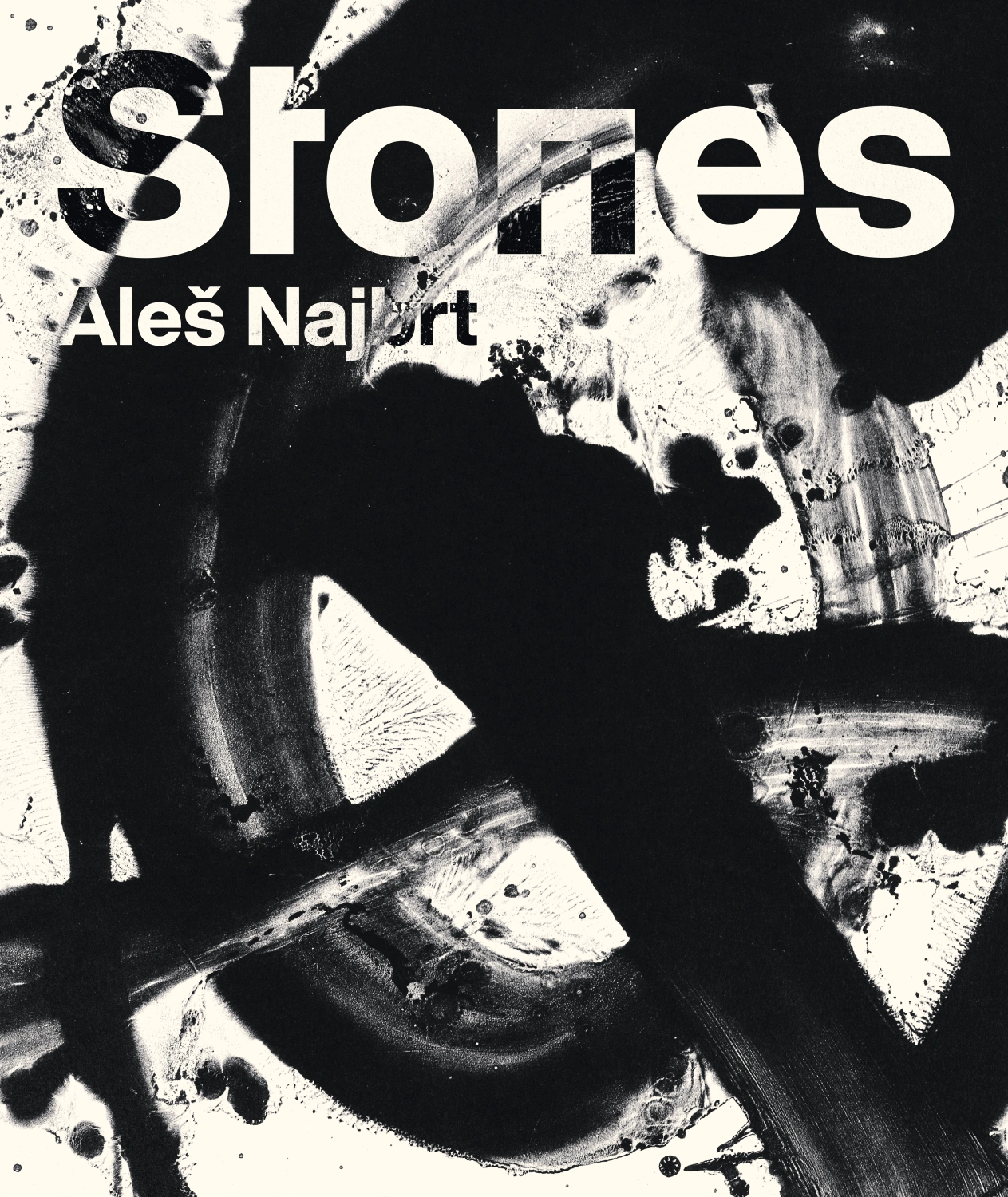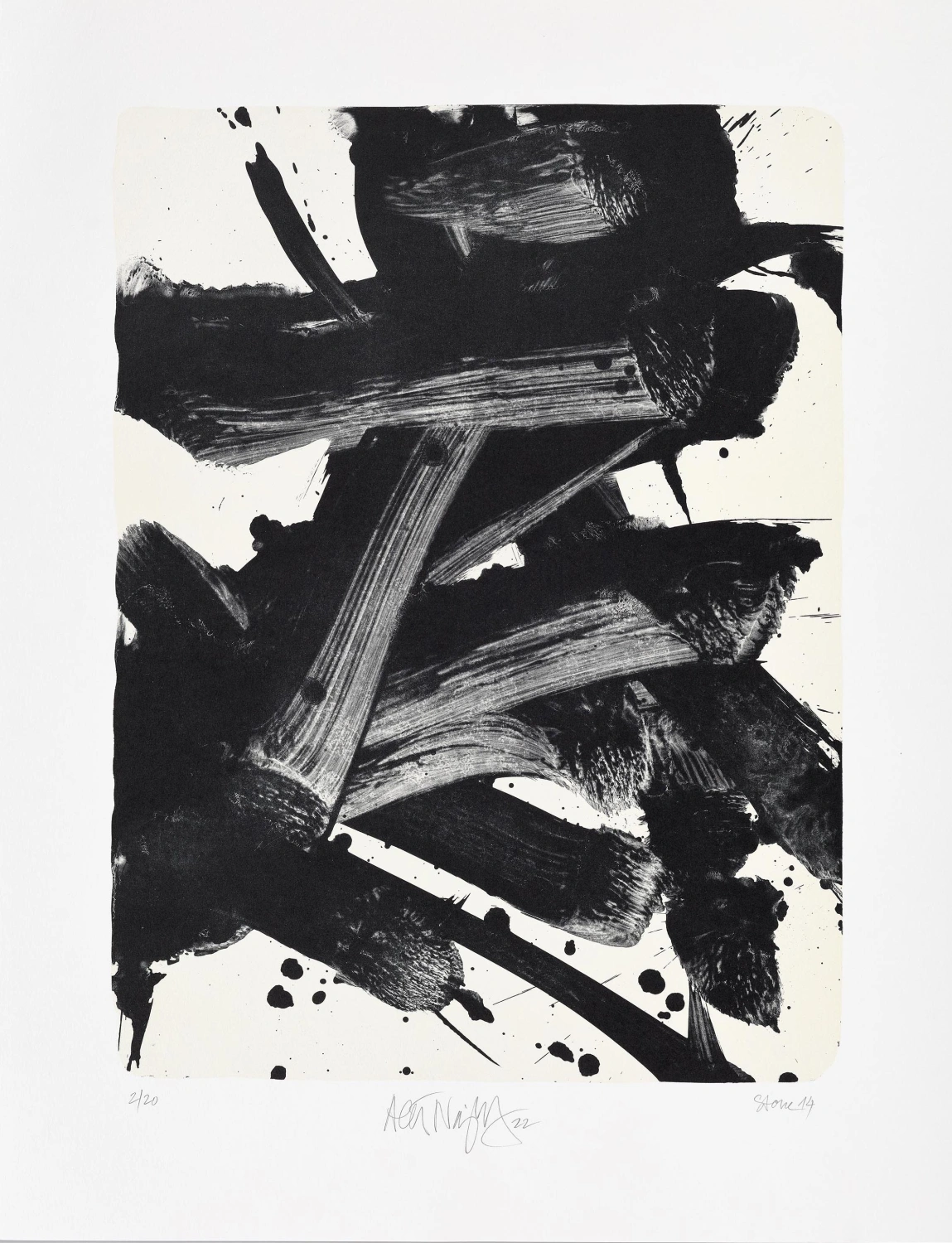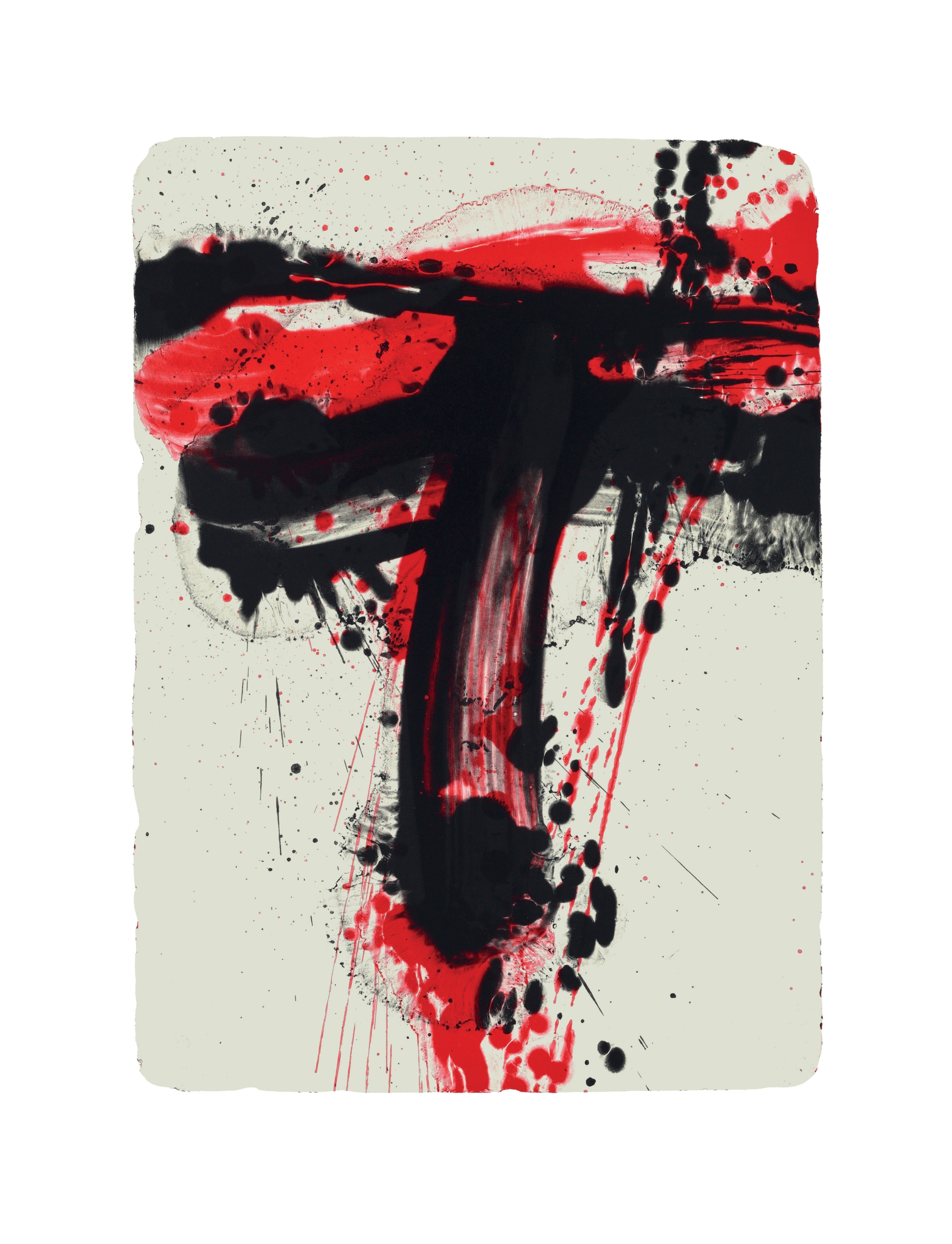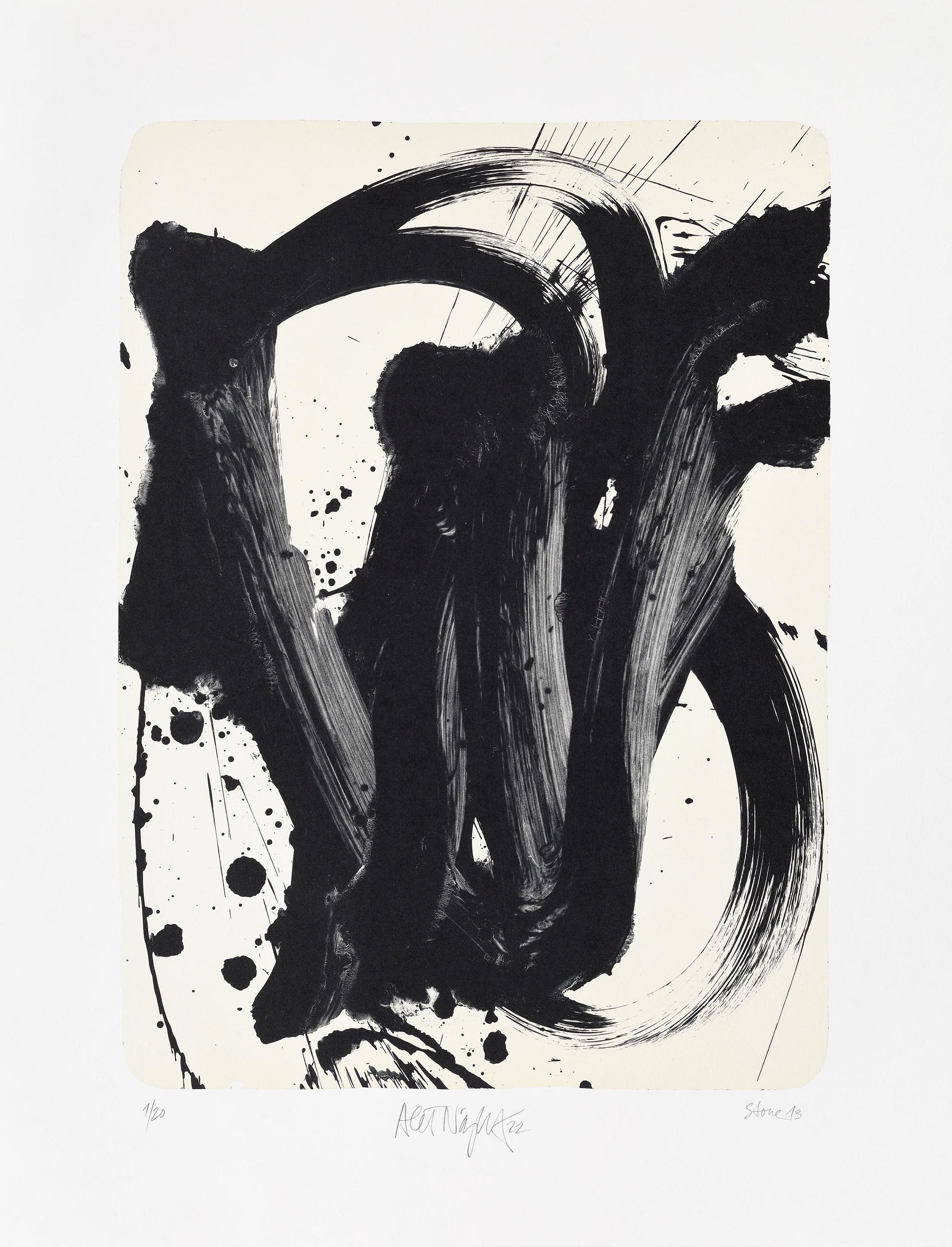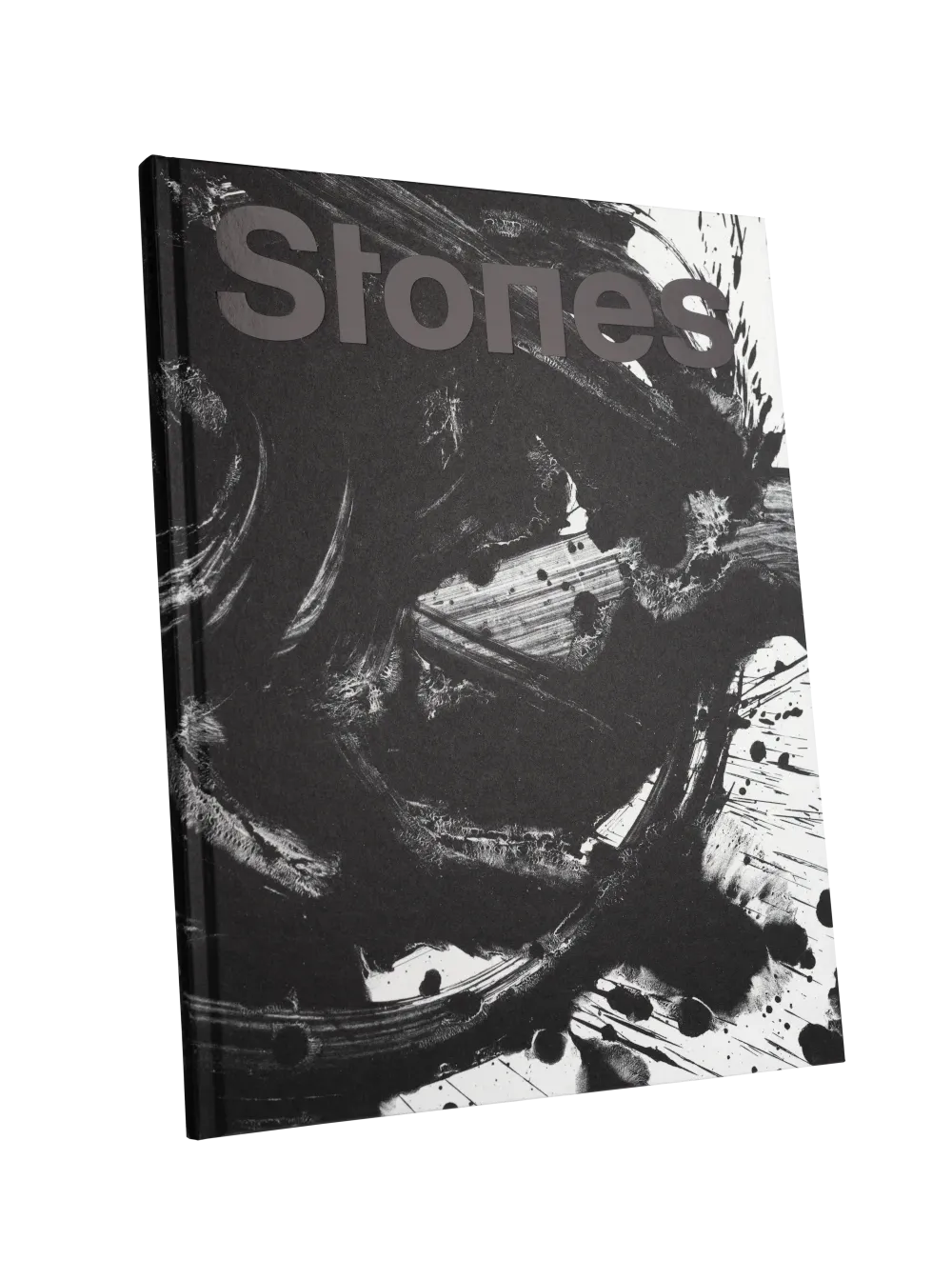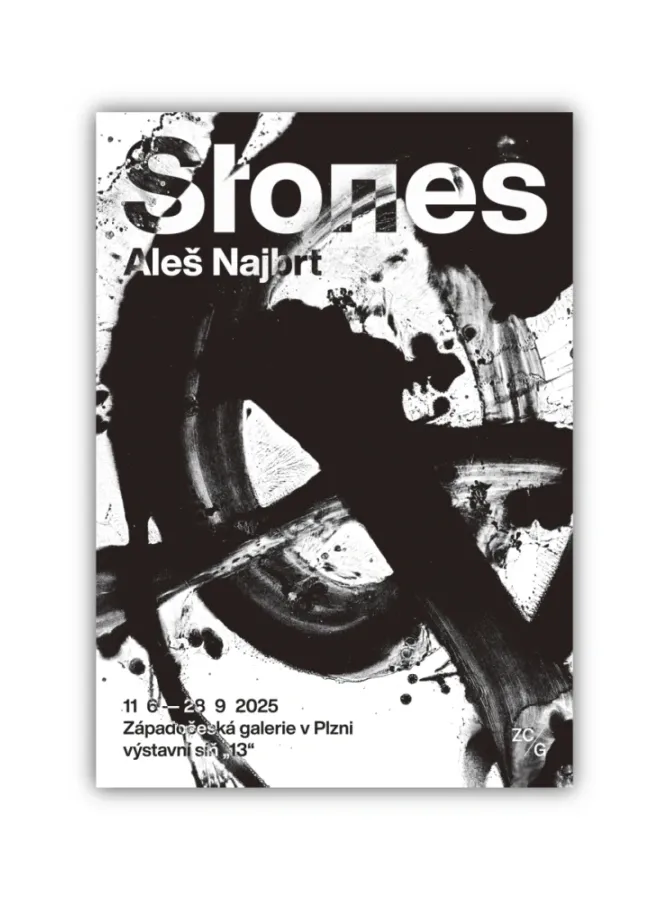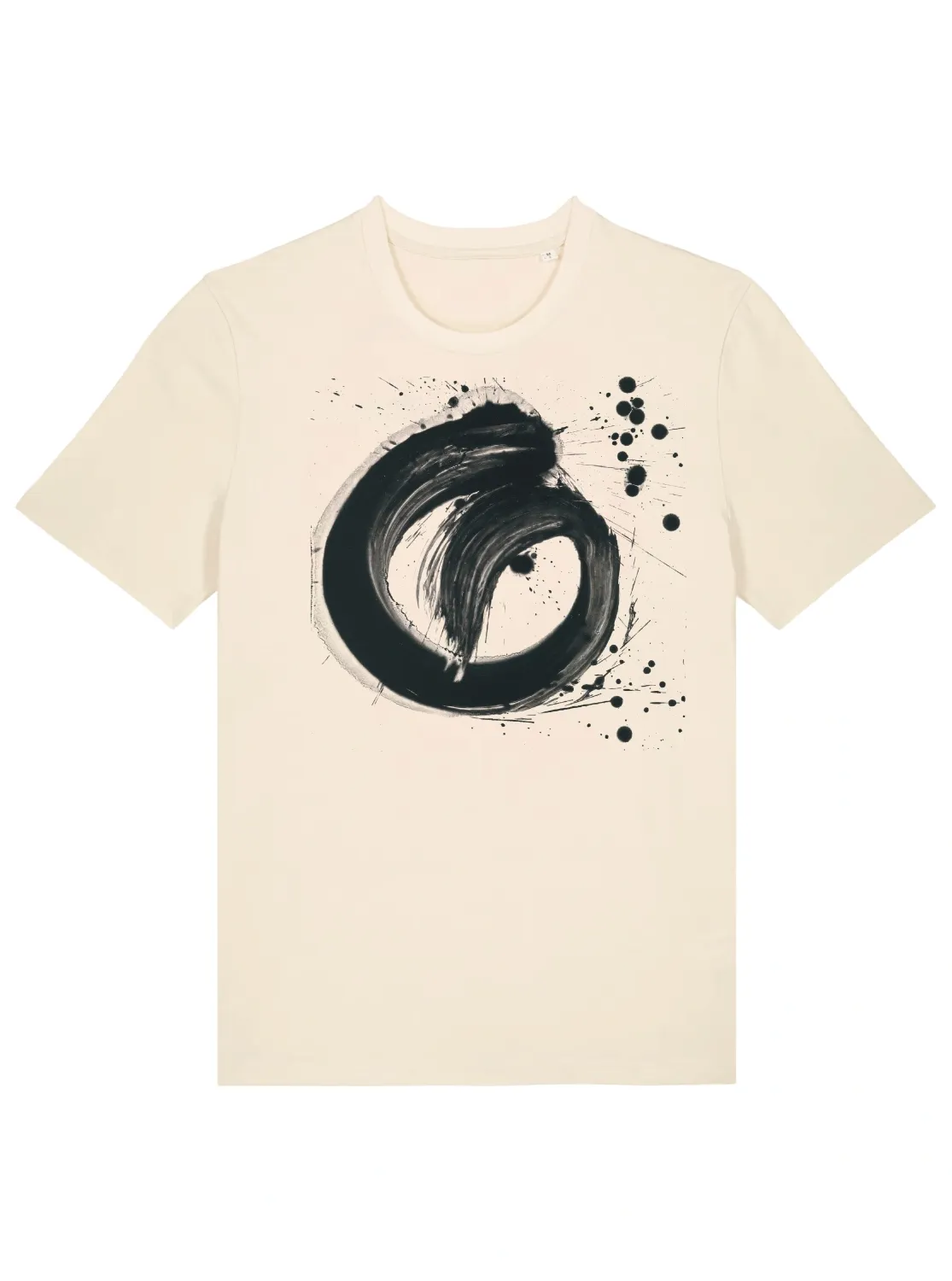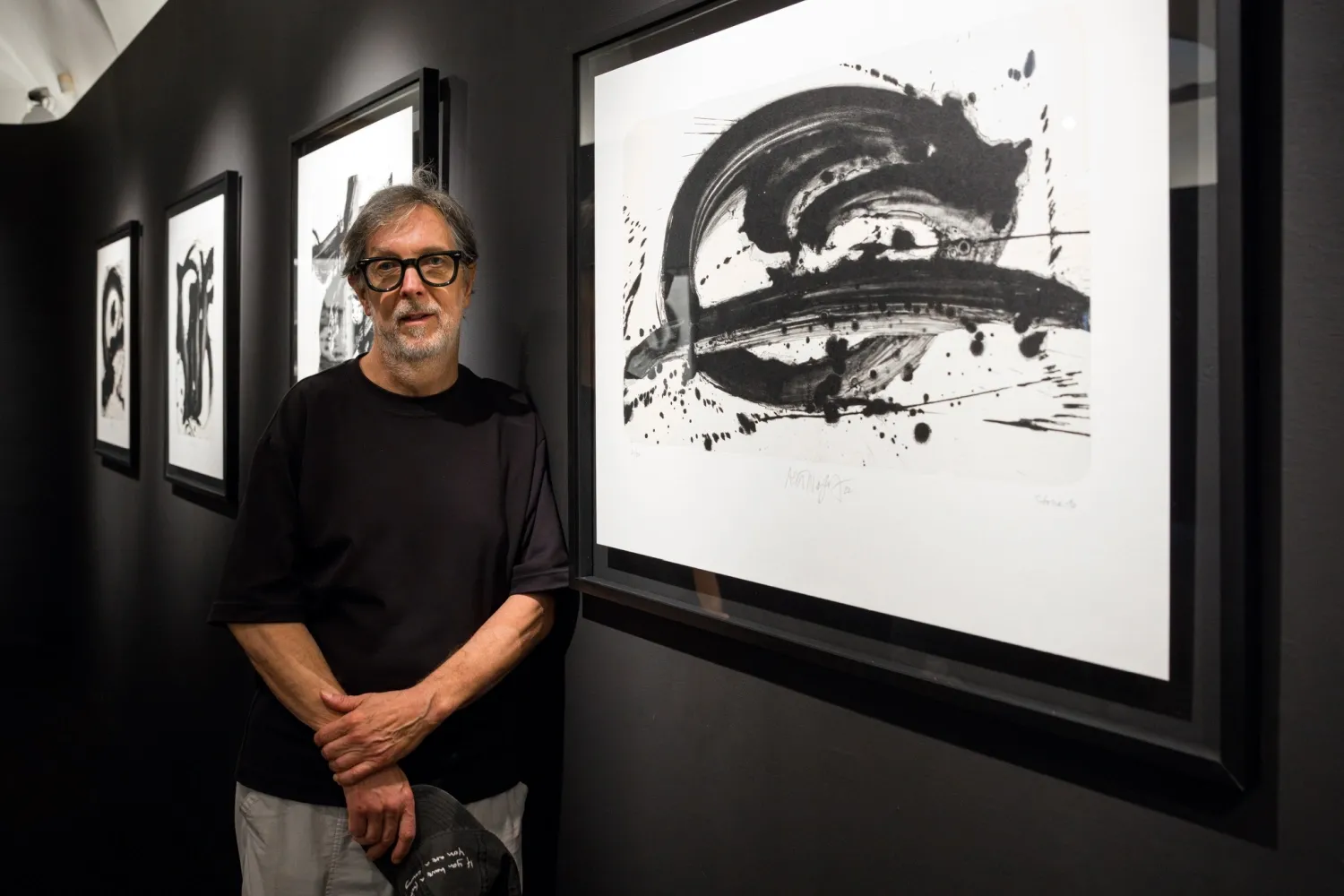Aleš Najbrt / STONES
Over the many years of his career, Aleš Najbrt has made a name for himself in the minds of those who are not indifferent to the visual level of public space as the long-time author of the graphic design of the Karlovy Vary International Film Festival, excellent urban and corporate styles, as well as many posters and book adaptations.
In recent years, however, he has returned to the free work he began during and shortly after his university studies. The focus of his interest has always been calligraphy, i.e. writing seen through the lens of the image, which is not legible in the manner of Renaissance and Baroque scriptoria or Chinese and Japanese calligraphers, but stands as an abstract image, closer to the gestural works of Hans Hartung than to the ‘neat handwriting’ of documents, whose primary purpose was and is different.
With the masters of Asian calligraphy, Najbrt’s prints share an emphasis on gesture and meditation, but their execution is not bound by a series of prescribed touches and brushstrokes on the ground on which they are created. Although the European tradition in which calligraphy was cultivated here is far removed from the Asian tradition associated with ink painting, the two share an unexpected number of common features, albeit mostly external ones.
Gestural washed drawing is an adventure with no guarantees. Intention, training, and even long-term practice cannot guarantee that everything will turn out as the artist hoped – or, ideally, as he did not hope. The exhibition presents the author’s lithographs created using a unique technique – toner diluted in alcohol. The artist uses this medium for calligraphy with Japanese brushes and now also with flat chalks; the resulting drawing, after drying on the stone, is fixed with acetone vapours, then covered with gum arabic and then with oil paint. This process is repeated until the drawing is oily enough to be printed.
The succinctness of the gesture also depends on the format of the stone used by the artist. It is perhaps obvious that a larger format is advantageous for capturing a ‘more detailed message’. The smallest stones used by Najbrt are 60 × 40 cm, the largest 100 × 70 cm.
Najbrt often emphasises that he does not feel the need to explain his work. The register behind the somewhat exaggerated but probably most accurate ‘message’ of his graphic sheets is for everyone to interpret in their own way, and there is no harm in letting one’s imagination run wild. In this way, the spectators will experience unexpected adventures with his work and make discoveries that they may not have expected, putting themselves in a situation similar to that of the artist. It will allow them to see reality from an unusual point of view and make them, in a casual way, to change their stereotypical and dangerously comfortable point of view.
In order for the viewer to enjoy Najbrt’s calligraphies at least as much as the artist himself, it is necessary to have an open mind that allows one to see or discover connections that are unexpected in the broadest sense of the word. It is again (as always) a matter of context, the awareness of which makes our complex world, at least for a while, a little more comprehensible – and perhaps even better organised.
